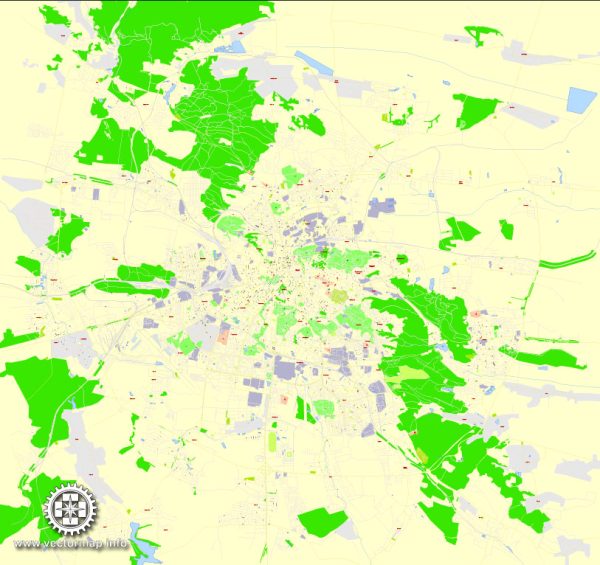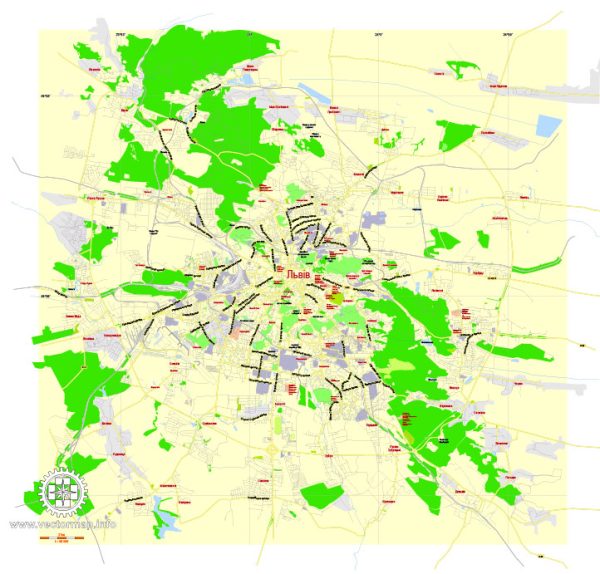Lviv, a city located in western Ukraine, is known for its rich architectural heritage and historical significance. The city’s architecture reflects a diverse range of influences, including Gothic, Renaissance, Baroque, and Neoclassical styles, with a strong emphasis on preserving its historical character. Here’s a brief description of Lviv’s architectural features:
- Medieval Architecture: Lviv boasts well-preserved examples of medieval architecture. The Old Town is a UNESCO World Heritage Site and is characterized by narrow cobblestone streets, colorful facades, and a mix of Gothic and Renaissance architecture. The Armenian Cathedral and the Dominican Church are excellent examples of medieval architecture.
- Renaissance and Baroque: The Renaissance and Baroque architectural styles are prominent in Lviv. Many churches, palaces, and townhouses were built or reconstructed in these styles during the city’s golden age. The Bernardine Church, the Dominican Church, and the Korniakt Palace are stunning examples of this era.
- City Hall: The Lviv City Hall, built in the Renaissance style, is a central architectural landmark. It features a high tower with a beautiful clock and a viewing platform, offering panoramic views of the city.
- Cathedrals and Churches: Lviv is often called the “City of Churches” because of its numerous religious buildings. The Latin Cathedral (Katedra Sw. Jura), St. George’s Cathedral, and St. Elizabeth’s Church are renowned for their intricate architecture and historical significance.
- Lviv Opera House: The Lviv Opera House, constructed in the Neo-Renaissance style, is an architectural masterpiece. Its grand facade, ornate interiors, and impressive performances make it one of Lviv’s cultural gems.
- Art Nouveau: Lviv also features buildings influenced by the Art Nouveau style, especially in the early 20th century. These structures often have intricate floral and decorative motifs.
- Soviet-Era Architecture: Like many Eastern European cities, Lviv also has examples of Soviet-era architecture, including functionalist and brutalist buildings, which contrast with the city’s historic core.
- Fortifications: Lviv was historically a fortified city, and remnants of its defensive walls, gates, and towers still exist. The High Castle Hill, overlooking the city, is a great vantage point with the remains of the old castle.
- Lviv’s Cafes: While not architectural in the traditional sense, Lviv’s cafes are notable for their unique and often vintage interiors, contributing to the city’s charm.
Overall, Lviv’s architecture is a testament to its rich history and the influences of various cultures that have shaped the city over the centuries. The city’s commitment to preservation and restoration has ensured that its architectural heritage continues to enchant visitors from around the world.





 Author: Kirill Shrayber, Ph.D.
Author: Kirill Shrayber, Ph.D.